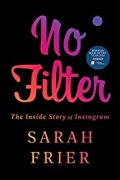
Rating: 7.3/10.
The Automatic Customer: Creating a Subscription Business in Any Industry by John Warrillow
Book about subscription businesses, the advantages of subscriptions over traditional revenue models, and strategies to succeed in this business model. It is fairly generic, offering advice that applies to no specific industry, but useful for any entrepreneurs looking to consider this business model.
Subscription businesses have a number of advantages over one-time payment businesses. Revenue is much more predictable, and you can count on some money coming in every month instead of having to rebuild your business every month. Customers gain loyalty and are more likely to buy more things once they are subscribed to something like Amazon Prime. In many cases, where there is a large amount of content, it can make more sense for them to get more value when they rent rather than buy it. When the demand is more predictable, you can avoid being over or understaffed.
Several different subscription models exist. One such model is a content subscription to a website containing valuable niche content that cannot be easily found elsewhere (eg: how to run a dance studio). Once this subscriber base is built, it becomes easier to sell other stuff to people who are already subscribed. Some services, like Netflix, have access to a large library of content. However, this usually requires a lot of capital, making it challenging to acquire. One strategy to start is by offering commission schemes to creators.
A subscription can be charged for access to a private club of people who are desirable to network with, with a minimum entry fee, ensuring that everybody in it is of high net worth and access to it is worth a lot of status. You can also charge extra to provide priority service if this is valuable to richer customers, for example, skipping the line at Disneyland.
Subscriptions can work for consumable items that run out, like shaving razors. It is almost impossible to compete on either price or delivery speed with giants like Amazon and Walmart, but you can offer unique branding and superior quality.
A surprise box of related products can work as a subscription; for example, homemade chocolate. In these cases, the manufacturers can give bulk discounts to reach our large customer base of subscribers. However, if they are small, they may be overwhelmed by the sudden influx of demand. An alternative is to bundle services on a regular basis with a simple price, so that the customer does not have to manage so many individual components when they are busy, for example, house cleaning which has many sub-services that are easily bundled together.
Finally, the peace of mind model is a service that is paid for, but the customer only occasionally requires it. It often works similarly to an insurance company, and understanding the likelihood of a claim happening is necessary to avoid underpricing the offering. Like insurance companies, returns can be made on the cash that is floating from when the customer pays until it is eventually needed to provide the service.
The financial metrics for subscription businesses look quite different from regular ones. Most importantly, the metrics to look at are CAC (Customer Acquisition Cost), the MRR per customer, churn rate, margin, and LTV (Lifetime Value). The business is generally healthy if LTV / CAC is at least 3. Cash flow is also important, and the payback period is the time it takes to recover the CAC. There are three options to start a subscription model: bootstrap is one option that has the slowest growth; you can raise funding with some loss of control, and the third option is to get the customer to pay upfront to lower the payback period.
Consumers are experiencing fatigue and are hesitant to start subscriptions. Some strategies to overcome this include emphasizing that the value of your product is much more than what it costs them. Additionally, offering a trial period can encourage them to use the product during this time. Eliminate any non-subscription options for using the service, as many people will opt for this if it exists. Selling gift subscriptions is another strategy, but expect low renewal rates when you do this. Lastly, consider offering discounts to people who are on the verge of converting but are not quite there yet.
Once the business grows, you need a higher volume of new customers to replace those who churn. Some churn is unavoidable, for example, if the company goes bankrupt, so the churn rate will never be zero. Try to onboard the customer and deliver value quickly. When optimizing for churn rate, identify which actions lead to churn versus renewal and drive users towards these actions. Send communications, but be careful: new subscribers are more welcoming to messages than old ones, so don’t overcommunicate. Send a surprise gift to loyal subscribers to keep them happy and more likely to renew. Make the subscription continue forever until they cancel it; this is generally recommended for consumer products, but in enterprise products, it is typically renegotiated every year.



